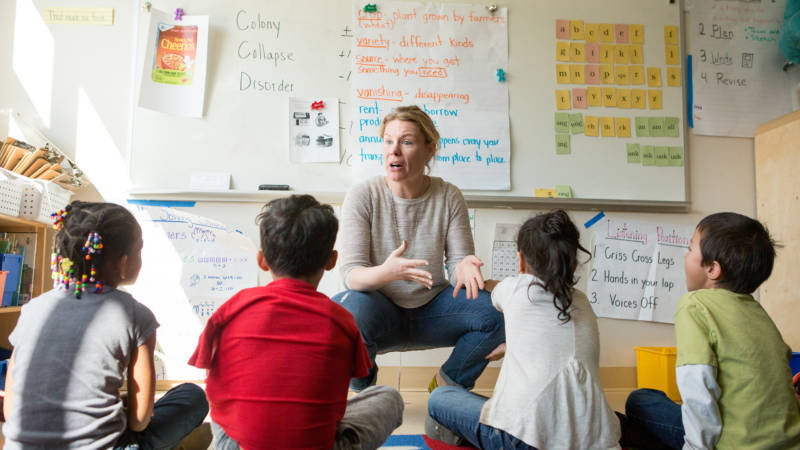“What they found was the kids who knew about baseball did very well, regardless of whether they tested as good or poor readers,” Wexler said. And even more telling, the kids who knew more about baseball, but had been identified as “poor” readers, performed better on the baseball-focused reading comprehension task than children who were deemed “good” readers, but who didn’t know much about baseball. Wexler says that study has been replicated in many other contexts.
This “knowledge gap” that concerns Wexler also helps explain the achievement gap. Largely mirroring growing income inequality, the achievement gap has remained stubbornly wide, despite concentrated efforts to close it. Wexler contends it’s not just about being rich or poor, it’s about the education level of parents. And, generally speaking, wealthier parents are more highly educated.
“Children with highly educated parents are immersed in sophisticated knowledge and vocabulary from birth, so they start school with more of that type of knowledge,” Wexler said. And, when they get to school, they continue to build on all that they knew before, whereas less affluent children often start school with less exposure to knowledge, and the gap only widens.
“So if schools are not providing [content-rich curriculum] in a systematic way, they can get to high school with huge, really crippling gaps in their knowledge,” Wexler said.
The severity of this comprehension gap often doesn’t make itself fully known until high school, when teachers assume students have more knowledge, the content is more complicated, and the texts more complex. Worse, Wexler said, tests designed to measure reading play into the idea that reading comprehension skills are generalizable.
“I’m not against testing per se,” Wexler said. "Testing has uncovered a lot of deficiencies that were hidden before. It has revealed these gaps and that’s important information to have. The problem with reading tests is they seem to be testing these general skills.”
When kids sit down to take their standardized reading test, most often the passages aren’t about anything they’ve been learning in class. In fact, they’re designed that way, to prevent any group from having an advantage. But Wexler contends most elementary schools aren’t teaching kids much content anyway. Instead, they read one-off articles about a topic that allow kids to practice the “skills” of reading comprehension.
“If kids don’t have the vocab and knowledge to read the passage in the first place, they’re not going to be able to find the main idea, or whatever,” Wexler said.
She also points out that the type of knowledge she’s talking about, the kind that leads to really good comprehension, is a long-term project. Each bit of knowledge builds on something that came before, so it can’t be measured in one or two year increments. It’s something that continues from year to year.
“If we want change to occur, we can’t just rely on teachers alone to do it,” Wexler said. “They do need to be on board, but building knowledge is a gradual, cumulative process and one teacher is not going to be able to do it.”
That’s why she’s excited to see some states dipping a toe into content-rich curriculum. Ironically it’s Louisiana, a state at the bottom of most measures of educational quality, that is pioneering content-based curricula and tests that align to it. The state is also experimenting with giving a reading test to students that covers topics they’ve covered in English and social studies.
“This both levels the playing field for kids, and it also gives teachers an incentive to focus on content and not these illusory skills,” Wexler said.
While the results of Louisiana’s experiment aren’t known yet, France inadvertently provided a massive case study on content-rich curriculum in 1989. E.D.Hirsch details the change in his book, "Why Knowledge Matters." French lawmakers passed legislation changing elementary school education in France to a skills-based approach to reading. Prior to 1989, the national curriculum had been focused on content. French children performed fairly well compared to their international peers, and wealthy kids performed at about the same level as poorer kids.
After the switch, however, things changed. In just a few decades, French children’s performance on international tests overall declined and the gap between wealthier and poorer students grew.
What Should Teaching Reading Look Like, Then?
For Wexler, it would be ideal for elementary school classrooms to dig into one topic for several weeks. Teachers could use read-alouds to expose children to complex texts, ones with more complicated syntax and vocabulary. In this way, kids learn about the topic and become familiar with the vocabulary. Together the class could discuss those ideas and connect them to the information they’ve already learned. Then, students might read simpler texts on their own about the same topic, but they will already be primed with some background knowledge and vocabulary.


